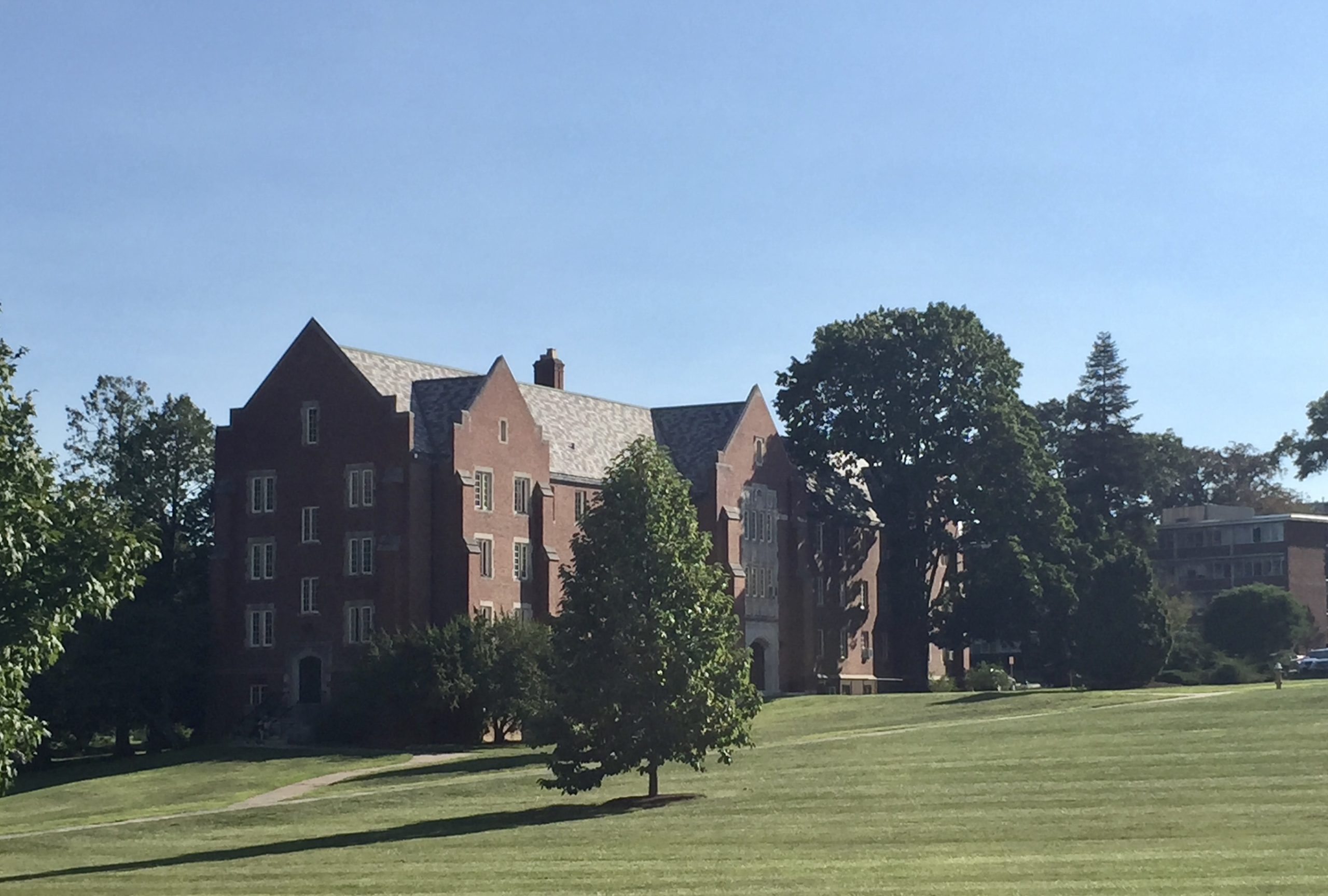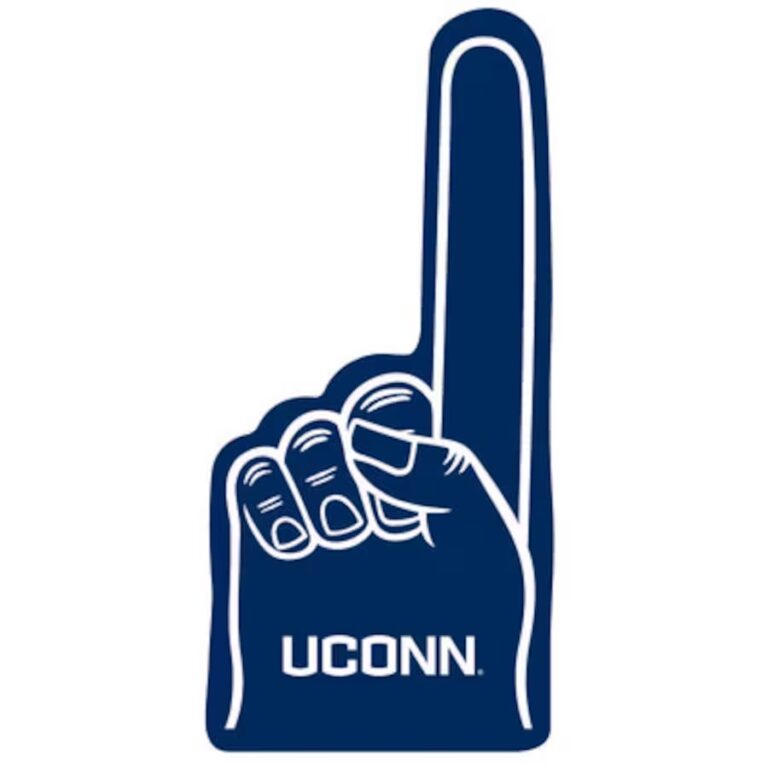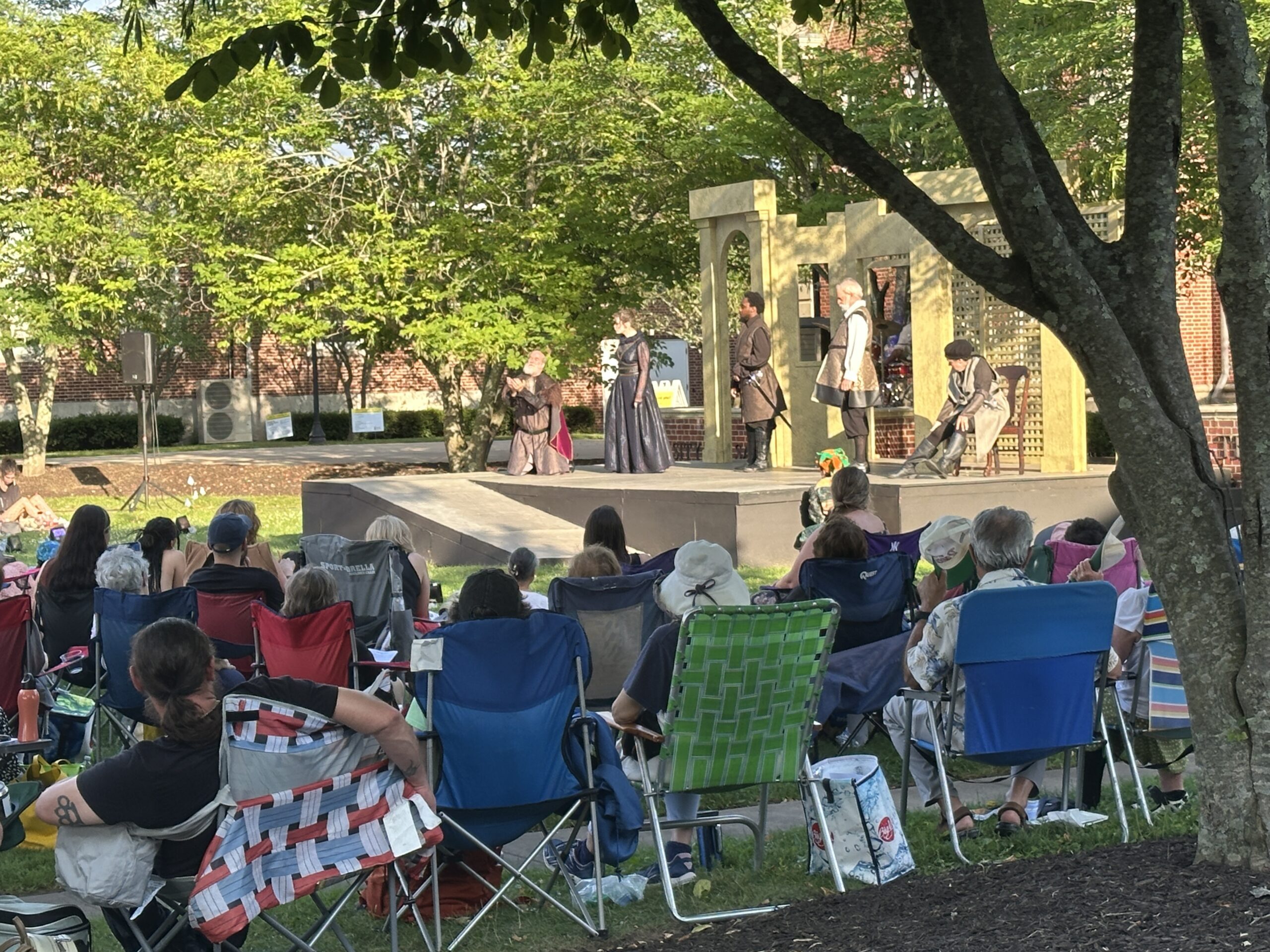College Bound: College Rankings and Ratings

Audio By Carbonatix

Photo credit: Ronni Newton (we-ha.com file photo)
We-Ha.com will be publishing a series of essays/blogs/reflections on the issue of going to college – primarily a set of thoughts and musings, along with some practical advice, intended to support students and parents as they embark on this journey. While many of our readers are experts in this topic, many others are less knowledgeable and have little outside support. We hope this is helpful to all readers as they go through the various stages of getting into and getting something out of college.
By Adrienne Leinwand Maslin
“We’re number 1, we’re number 1,” we all shout while holding up spongy hands with the first finger pointing skyward, as far as our arms can reach. We all like to taunt the other fans on occasion and brag about the dominance of our favorite team. Perhaps you wore one of these while following the UConn teams last season!

Submitted image
What about when it comes to institutions of higher education? What do those rankings mean? Let’s take a deeper dive, see how rankings developed and put them in perspective.
European psychologists were the first to rank universities in an attempt to discern whether society’s eminent members occupied their positions due to heredity or learning. These investigations produced the two earliest rankings: Where We Get Our Best Men (1900) and A Study of British Genius (1904).
The first American rankings were developed several years later. In November 1910, the Association of American Universities held its annual meeting in Charlottesville, VA. At that meeting, the deans of graduate schools met as a smaller group to discuss graduate programs and admissions requirements. At this time in the history of higher education in the U.S., graduate programs did not necessarily require the completion of four years of undergraduate study. The concern at that time, therefore, was determining which incoming students would need to complete a program longer than one year’s duration to earn a master’s degree.
At the urging of this group of deans, Kendrick Charles Babcock, Specialist in Higher Education with the Bureau of Education, U.S. Department of the Interior, produced A Classification of Universities and Colleges With Reference to Bachelor’s Degrees. Published in 1911, it divided several hundred U.S. colleges among four categories. Those in category one contained colleges whose graduates – as long as they were “earnest student(s) of good ability and health” – would need only one year to complete a master’s degree. Category two included colleges whose graduates would most likely require only one year although, possibly, might need two years. Categories three and four contained those colleges whose students would almost certainly need a two-year graduate program.
College rankings have come a long way since 1911 and while the first U.S. News & World Report ranking (USN) wasn’t published until 1983, there was much comparison of colleges and universities and departments within those institutions over the intervening years. The USN rankings are the most famous but other rankings include those of the Financial Times, Wall Street Journal, Forbes, Money/money.com, and the Princeton Review.
Recently, college rankings have become somewhat suspect, and colleges, students, parents, and counselors are all reconsidering the importance of rankings. In 2022, Columbia University professor of mathematics Michael Thaddeus disputed Columbia’s No. 2 ranking, showing with his own statistical analysis that “key supporting data were ‘inaccurate, dubious or highly misleading.’” As a result of his research, Columbia’s ranking dropped to 18–a precipitous decline that is in itself suspect. (In 2023 Columbia announced it would no longer participate in USN’s rankings. It is not the only undergraduate institution to withdraw and many of the most well-known medical and law schools have pulled out as well.)
Another example of rankings fraud involved the former Dean of Temple University’s Richard J. Fox School of Business and Management, Moshe Porat. Mr. Porat, who worked with two other Fox School employees, “was sentenced to one year and two months in prison, three years of supervised release, and was ordered to pay a $250,000 fine … after being convicted of fraud in connection with a scheme to artificially inflate the school’s program rankings against other schools nationwide.”
Incidents such as these cause many to wonder about the accuracy of information and data provided to ranking publications and how much stock to place in the rankings once they are published.
Are there any advantages to ranking colleges? U.S. News thinks so. USN believes it is serving “the best interests of students and their families.” Rankings also boost sales.
For colleges and universities it is more of a love-hate relationship. The love part: if a college is highly ranked it is easier to raise tuition, the college generates more donations from alumni and corporate donors, it can potentially be more selective in admitting students, and their graduates may have an edge over others when seeking admission to selective graduate programs. The hate part? Well, colleges frequently don’t believe they were fairly ranked.
There is no one fixed method of determining rankings which is why each publication has a different ranking order. But, to understand rankings in general, it is important to know something about the Carnegie Basic Classification. The Carnegie Foundation, established by Andrew Carnegie in 1905, serves to improve and advance K-12 and higher education. The Carnegie Foundation published its first classification framework in 1973 to help describe “institutional diversity in U.S. higher education.” The classification is updated every three years. The basic classification distinguishes among doctoral institutions, master’s degree granting institutions, baccalaureate colleges, associate’s degree colleges, tribal colleges, and special focus institutions.
To be ranked in U.S. News & World Report, institutions had to meet the following conditions: “have regional accreditation, be included in Carnegie’s Basic classification but not designated as a ‘highly specialized’ school, enroll at least 100 undergraduate students, have reported financial expenditures data to the U.S. Department of Education’s Integrated Postsecondary Education Data System (IPEDS) finance survey, and have reported a six-year graduation rate of full-time, first-year bachelor’s degree-seeking students in recent years. Surveyed schools not passing all of these criteria are listed as unranked.”
USN has modified the Carnegie classification system and ranks institutions within the following categories: National Universities, National Liberal Arts Colleges, Regional Universities, and Regional Colleges.
The Princeton Review uses two classification systems for its rankings titled The Best 389 Colleges. The Princeton Review’s college rankings are based on student reviews of everything from the best college radio station to colleges with the least/most politically active students to the best/worst campus food. (The best food is at UMass-Amherst; the worst is at Warren Wilson College in North Carolina.) The college ratings are based on data provided largely by administrators at each participating institution.
The “featured” designation that is seen next to some college names is paid for by the college; it is not a designation by The Princeton Review. Further, beyond the first 25 colleges in ranked order within each category, descriptions of Princeton Review’s best colleges appear in alphabetical order.
Money has gone to a rating system rather than a strict ranking system. Colleges are rated on a two- to five-star basis in half-star increments. “We understand most readers are used to numerical rankings that order colleges, but we feel a rating system more accurately represents the variation in colleges’ performance. In a numbered ranking, very small differences in colleges’ scores result in different ranks, exaggerating the difference in performance. As experts have long advised, it’s more important to look broadly at where a college lands on a list and not its precise rank.”
Consider, for example, the differences between Harvard, Yale, and Princeton. The rating system used by money.com puts all three in the same “bucket,” while ranking systems make one of these institutions better than the other two.
How seriously should you take college rankings and ratings? I believe that, generally, more information is better than less. But you must know the criteria upon which the ranking was based. I like the Princeton Review for the way it includes student opinions as well as institutional data. It’s two page spreads on each included college are quite valuable. I like Money for the logic behind developing a rating, rather than a ranking system. And I like Money for its admission that rankings don’t measure everything that’s important: “Like any college ranking, Money’s is best used to discover new schools, not to narrow down your list. While data can tell us a lot, there’s just as much that rankings don’t measure, like how much actual learning happens on campus and what specific skills students leave with; or whether students are happy and alumni are satisfied.”
My advice? Prepare your own list of criteria first. No matter how high a college is ranked, you will not be happy if the college is in Maine and Florida sunshine is more your thing. It’s not for you if, as soon as you walk onto campus for a visit, you pick up an uncomfortable vibe.
You must first know yourself, your likes and dislikes, and your top priorities for your college education, before looking at rankings. Then, if you are so inclined but it is not a necessity, take a look at some of the rankings. See what you learn from them. Other things you will want to do, however, is take a thorough look at college websites, visit some campuses if you can, call the Admissions Office and ask to be put in touch with a current student or two and learn more about the college from a student perspective, talk to a faculty member from your major if you have one in mind, and make your decisions with information from as many sources as possible.
Remember, too, that out of approximately 3,500 colleges in this country and many in other countries that you might wish to consider, there are many colleges where you can thrive and be happy. And that’s your goal!
Adrienne Leinwand Maslin recently retired from a 45-year career in higher education administration. She has worked at public and private institutions, urban and rural, large and small, and two-year and four-year, and is Dean Emerita at Middlesex Community College. She has held positions in admissions, affirmative action, president’s office, human resources, academic affairs, and student affairs. Maslin has a BA from the University of Vermont, an MEd from Boston University, and a PhD from the University of Oregon. She is presently creating a TV/web-based series on life skills and social issues for 9-12 year olds believing that the more familiar youngsters are with important social issues the easier their transition to college and adulthood will be. Information about this series as well as contact information can be found at www.shesroxanne.com.
Like what you see here? Click here to subscribe to We-Ha’s newsletter so you’ll always be in the know about what’s happening in West Hartford! Click the blue button below to become a supporter of We-Ha.com and our efforts to continue producing quality journalism.



